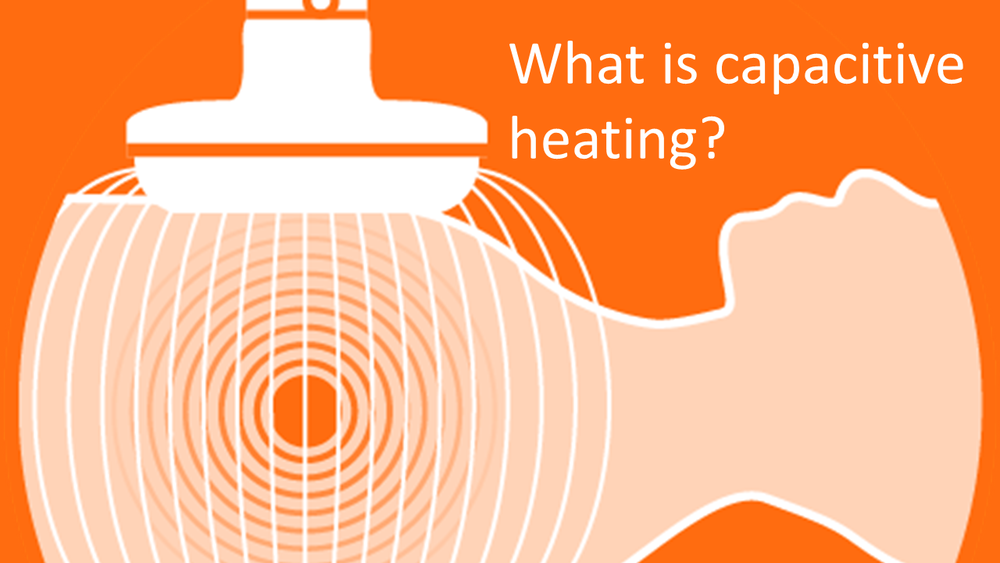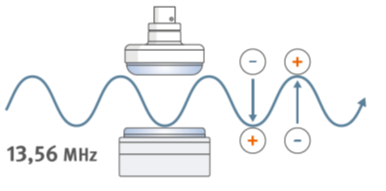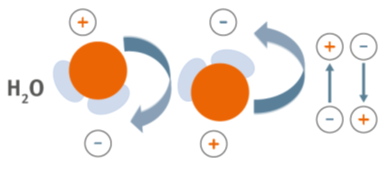
What is capacitive heating? or: Why does it get warm at depth?
What is capacitive heating? or: Why does it get warm at depth?
In capacitive heating, a voltage is applied between a positively charged side and a negatively charged side. However, there is no conductive connection between the two poles, so in principle no direct current flows.
So how does the principle of deep heating work?
The type of dielectric between the two charged poles is decisive for the heating effect. All ions inside the dielectric (ions are electrically charged particles) react to an electromagnetic field and move accordingly, generating heat. Ions are found in every cell and in intercellular space.

Fig. 1: Operating principle of the electromagnetic field
However, we have the strongest effect when so-called dipoles are found in the dielectric. Once again, our dielectric is the space between the lower and upper electrode and ideally - in our context - this is a surface that touches the human body as comprehensively as possible. Human tissue is primarily water-based and here we use a characteristic of the water molecule. Water molecules are such dipoles. Dipole means that one atom, i.e. the oxygen atom which is electrically slightly negatively charged by itself, is positioned on one side and the two hydrogen molecules on the other side. This does not balance them electrically. When an electric field is applied, water molecules align themselves accordingly (see Fig. 2 drawing).

Fig. 2: Dipole structure of water
With the capacitive heating in the Celsius42 device, we now change the polarity between the poles very quickly, namely 13.56 million times per second. These fast rotations, to which the water molecules adapt accordingly, generate friction with neighbouring molecules and this is exactly the main effect of the heating, quasi inside the dielectric.
The more and the closer the dipoles are to each other, the stronger this effect becomes. Internal organs thus have a higher heat coefficient than, for example, bone structures or bone marrow structures. However, more detailed information can be found in further information under the topic "Heat tolerance". And of course this effect is ceteris paribus just as stronger the stronger the applied field is. When operating the Celsius42 device, these are the wattages to be set. The cumulated energy input always appears in the documentation of a session as a summarizing kJoul figure. Often one speaks also of SAR (Specific Absorption Rate).
